

Waterline is an ongoing series that explores the solutions making rivers, waterways and ocean food chains healthier. It is funded by a grant from the Walton Family Foundation.
A pelican descends through a canopy of green cottonwood leaves. The frost-plumed bird lands upon an exposed sandbank in a thin ribbon of blue water flanked by lithe willows. Gorgeous as it is, this lush Sonoran Desert oasis is but a relic of a time when the water was much more than a sliver. Here, the once-mighty Colorado River swelled across the Fort Yuma Quechan Reservation, straddling California and Arizona near the U.S.–Mexico border.
Frank Venegas, the Quechan Tribe’s water technician, looks out on the river and shakes his head. He grew up fishing here with his uncles and laments not being able to do the same with his nephews. Now, not only has the water been reduced to a trickle through the reservation, but in many areas, just beyond this stretch of shoreline, invasive plants choke out river access.
For the Quechan people, a living river is not just about water — it requires native plants and wildlife. To help bring the Colorado River back to life, the tribe is taking matters into its own hands by planting one native seed at a time. The tribe is successfully restoring 100 acres of the river’s original riparian assemblage on the reservation, ushering in a return of critical wildlife and cultural resources for the Quechan people.
The Colorado River once fanned across the Yuma Valley, lined by craggy volcanic peaks. Seasonal muddy torrents spread water and nutrient-rich sediments across the floodplain. Ribbons of green spread along the river corridor until the next flood scoured away plant life while spreading new growth downstream. This cycle repeated naturally with spring runoff and monsoon floods.
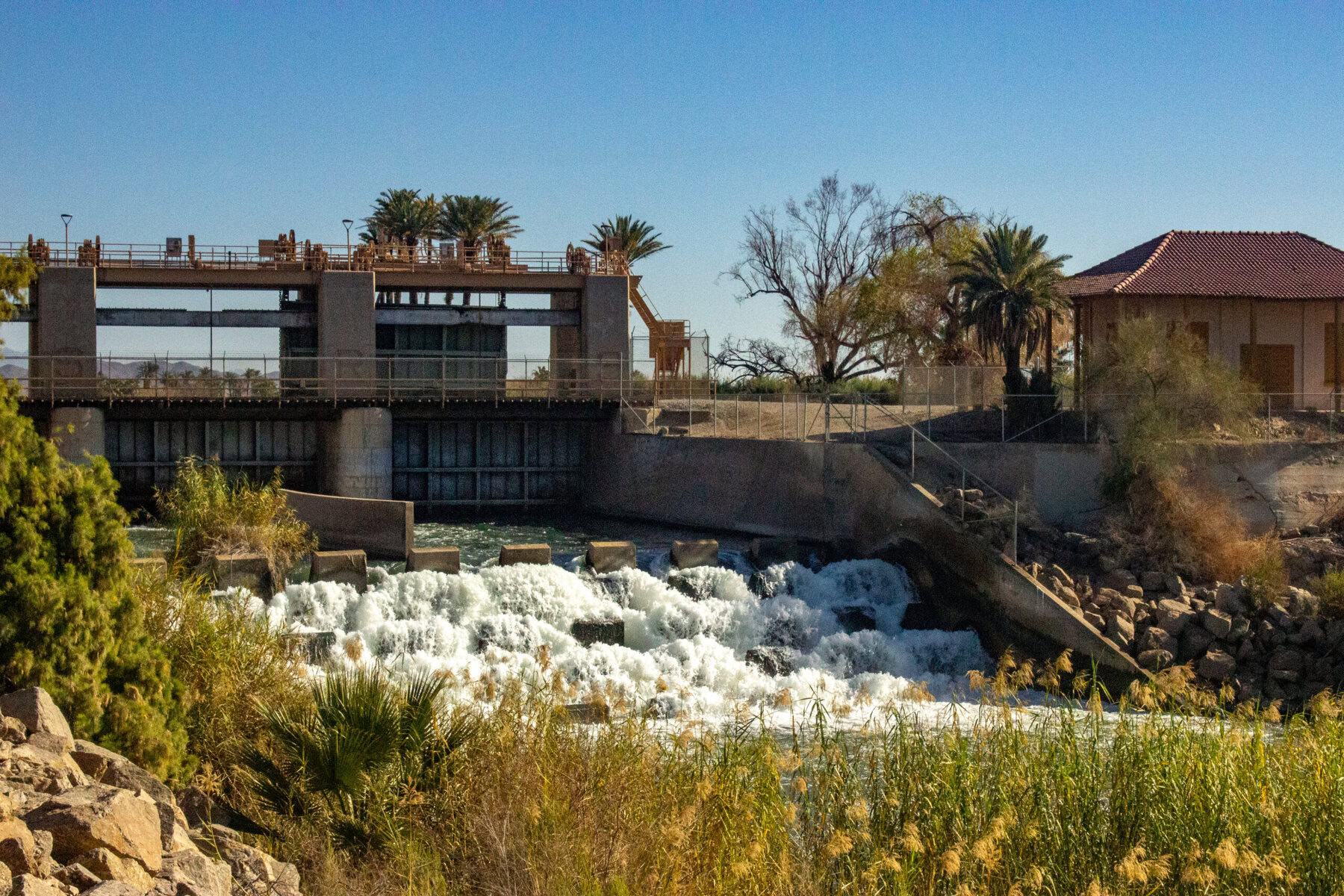
In the 1800s, salt cedar was introduced from Eurasia to stabilize stream banks and prevent catastrophic flooding. Salt cedar consumed native plant habitat, altered soil chemistry and, in addition to reduced water flows, narrowed the Colorado River like a canal. Steamboats shipped goods and passengers up and down the wide river, fueled by cottonwood lumber. This began to decimate native plant populations, but its effect was minimal compared to 20th century dam construction. Laguna Dam, built in 1905 on the northern boundary of the Quechan Reservation, began altering the river’s ecological habitat by reducing water flows.
Today, 15 dams and 1,358 diversions control the natural flow of the river to serve 40 million people, support agriculture and generate electricity. The Colorado has been further stressed by two decades of drought, the worst in 1,200 years. The water passing through the reservation is now less than 20 percent of its volume a century ago.
The tribe’s latest project is supported by funding from the Bureau of Reclamation and private funds sourced by Blue Commons and Bonneville Environmental Foundation. Both nonprofits pair private sector businesses with water conservation efforts to replenish corporate water withdrawals from the Colorado River watershed.
While Venegas’ key role is managing the tribe’s Colorado River water allotment for agriculture, he has spearheaded this project as part of his deep commitment to the future of the river. “The living river is the plants, the fish, the animals, the people,” he says.
Weighed down by negative news?
Our smart, bright, weekly newsletter is the uplift you’ve been looking for.We stop near the river to see the tribe’s 56-acre restoration site — the newest of seven such sites on the reservation dating back to 2011. Chase Choate, the Quechan Tribe environmental director, is leading the reintroduction of three native plants: honey mesquite (Neltuma glandulosa), Goodding’s willow (Salix gooddingii), and Fremont cottonwood (Populus fremontii). “I’m Johnny Mesquite Seed!” Choate jokes.
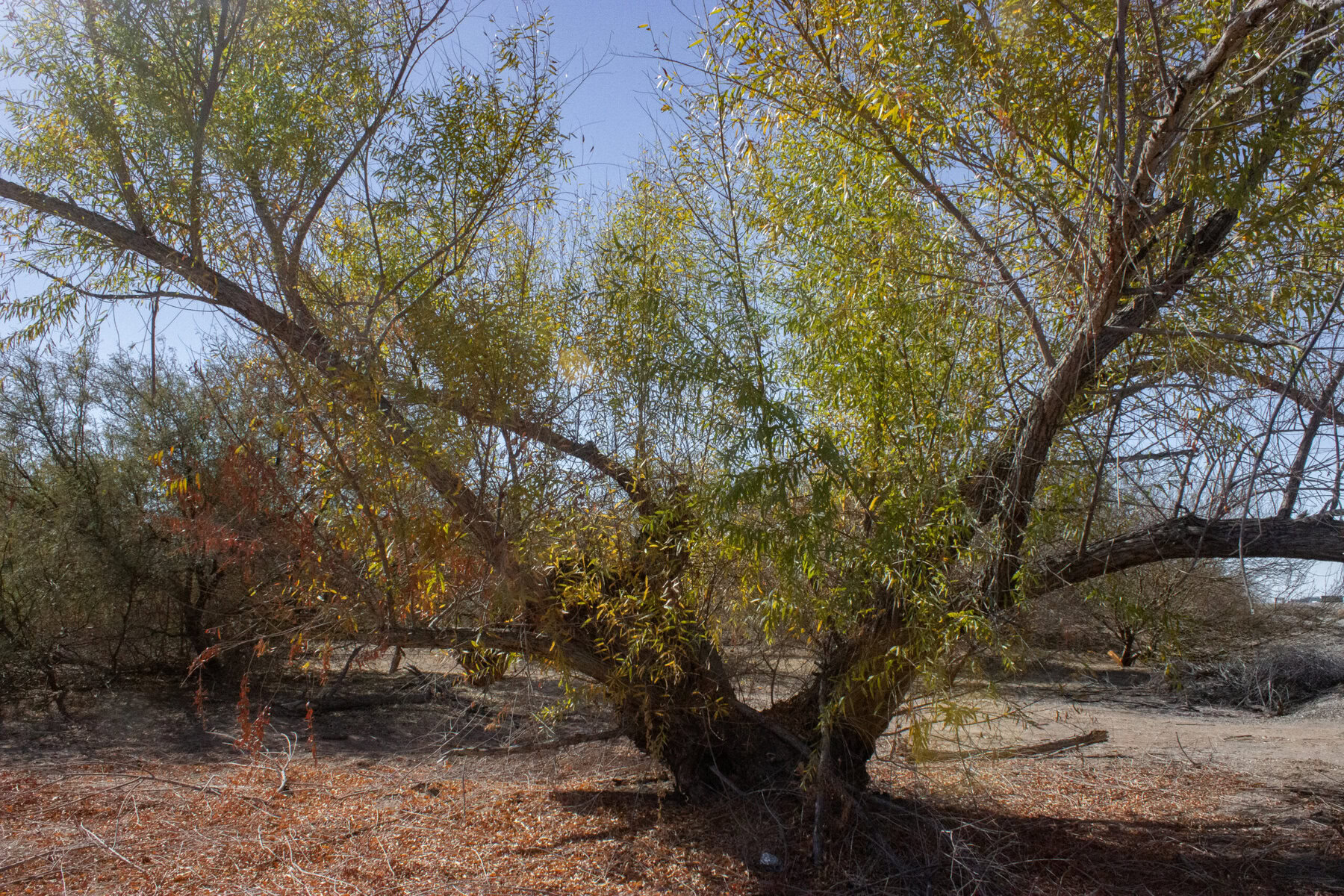
Before planting, introduced species are cleared from the riverbanks and flood plain. A long-range excavator also clears out phragmites reeds, which cling to the precipitous edge of the riverbanks. Though this common reed is native to North America, an introduced variant chokes out the riverbanks. Dust plumes into the air as a tractor bulldozes two types of salt cedar, Tamarix ramosissima and Tamarix chinensis. The chinesis variety can grow 14 feet tall and are the toughest to clear. The goal is to beat the salt cedar’s spring blossoms — its beautiful pink tendrils allow swift propagation.
The drought-tolerant plant, which is also known as tamarisk, concentrates salts in its spindly leaves. Upon dropping, those leaves increase soil salinity under the plant canopy. As Choate explains, a major aim of the project is to prevent regrowth of salt cedar, but other stressors threaten the native plants as well. In the early years, reintroduced native plants had a survival rate of just 40 percent because the willows were affected by a period of blight, fungus and insect predation. Now, native plants at the 2023 site have an 80 percent success rate because of improved maintenance, especially continued tamarisk removal and drip-line irrigation methods.
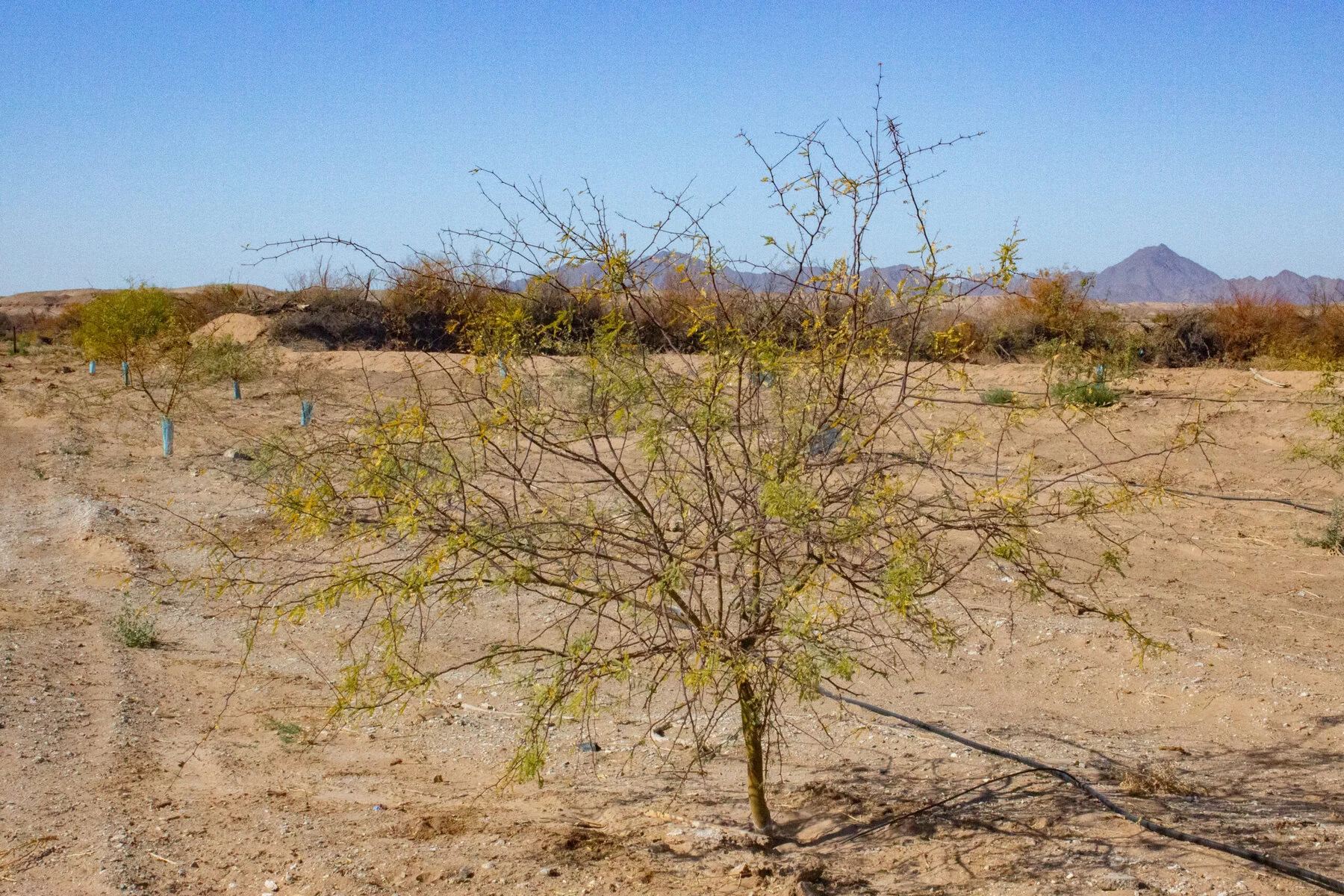
The Quechan Tribe’s current project conserves water by replacing antiquated agricultural infrastructure on 446 acres known as “Ranch 4 and 7.” This includes relining the earthen Mohave Canal to prevent loss of water to seepage. A solar pump installation will allow withdrawals from the Mohave Canal instead of the Colorado River. (This water is more efficient to use because it is strained of river debris by Imperial Dam, unlike the sediment-laden water in the river’s mainstem.)
Leased ranches are irrigated with a portion of the tribe’s 77,966-acre-foot Colorado River water allotment finalized in the 2006 Arizona v. California decree. (An acre-foot of water will flood an area the size of a football field with one foot of water.) During the hottest months of the year, April to July, Ranches 4 and 7 will voluntarily fallow their fields, saving 13,000 acre-feet to help maintain critical levels in Lake Mead, the reservoir formed by Hoover Dam. Water savings from this project contribute 200 acre feet of water that are used to irrigate the new 56-acre restoration site.
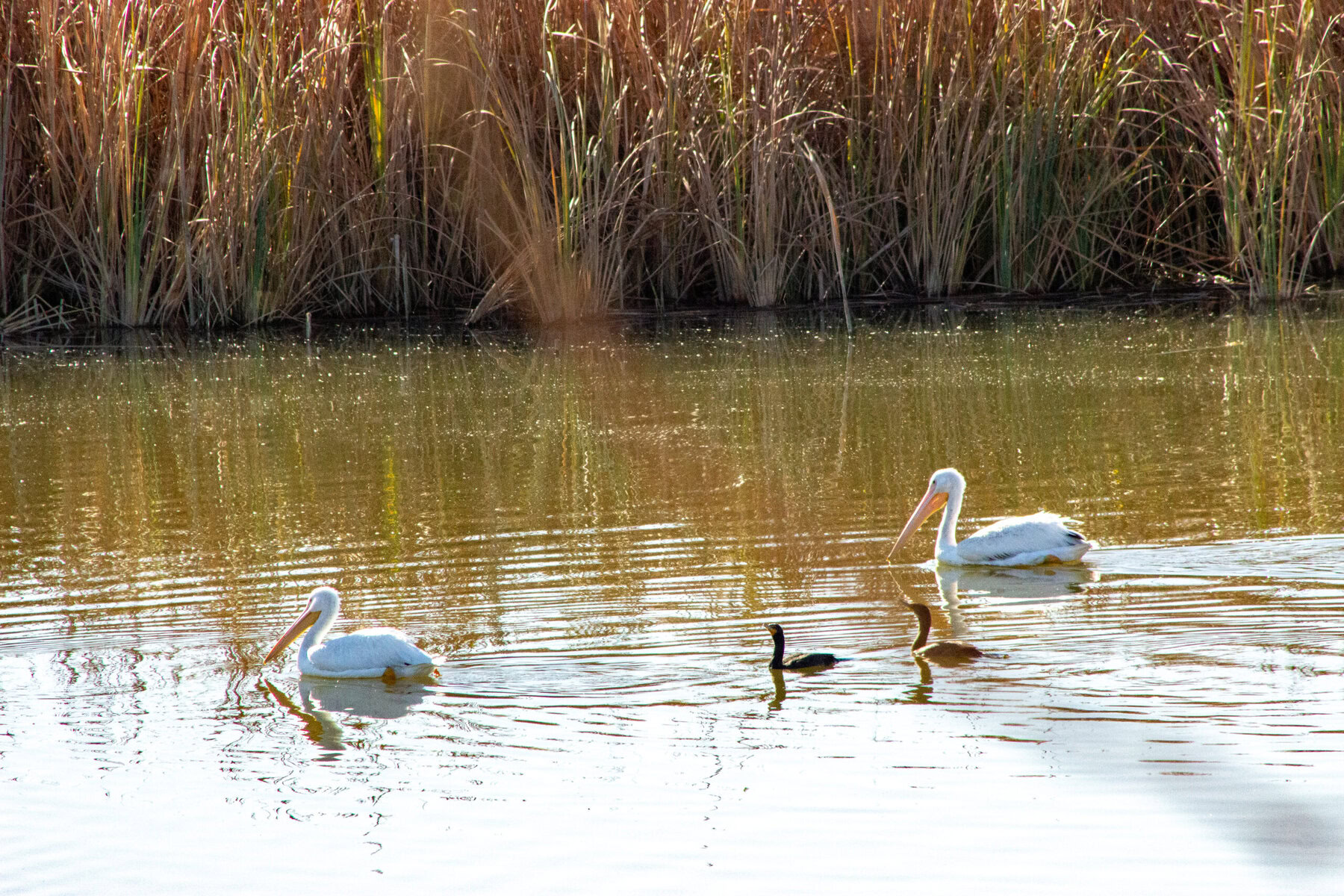
At the restoration sites, new plants are irrigated with water-efficient drip line irrigation for five to seven years until they can be weaned. The combination of water conservation savings and the reintroduction of native plants has already begun to bring the lower Colorado River habitat back to life. At a site planted in 2023, three-foot tall cottonwood saplings grow in clear view of mature trees at the flagship site (planted in 2011), standing 50 to 75 feet tall.
The Quechan Tribe’s goals for this restoration project are the sustained return native plants and wildlife as well as availability of cultural resources for tribal members to gather for traditional uses.
When native saplings take hold, other native flora thrive. Endemic shrubs like Baccharis or seepwillow (Baccharis salicifolia) return to riverside areas of their own volition. Palo verde (Parkinsonia florida) and ironwood (Olneya Tesota) are planted in the maturing restoration sites. Choate points out a wolfberry (Lycium carolinianum) bush that provides a nutrient-dense berry similar to Gojis. “Give [native plants] space, the water, the love, and they’ll take over,” says Choate.
As the plants return, so does the wildlife — quail, rabbits, snakes and coyotes. The Quechan restoration sites are within designated critical habitat for the endangered southwestern willow flycatcher. As its name implies, willows (not tamarisk) are a critical habitat for the flycatcher. Maximizing potential habitat value for this species is part of the Quechan’s agreement within the Fish and Wildlife Management Plan for the critical habitat area. This is especially vital as the current U.S. administration seeks to remove habitat protections from the Endangered Species Act.
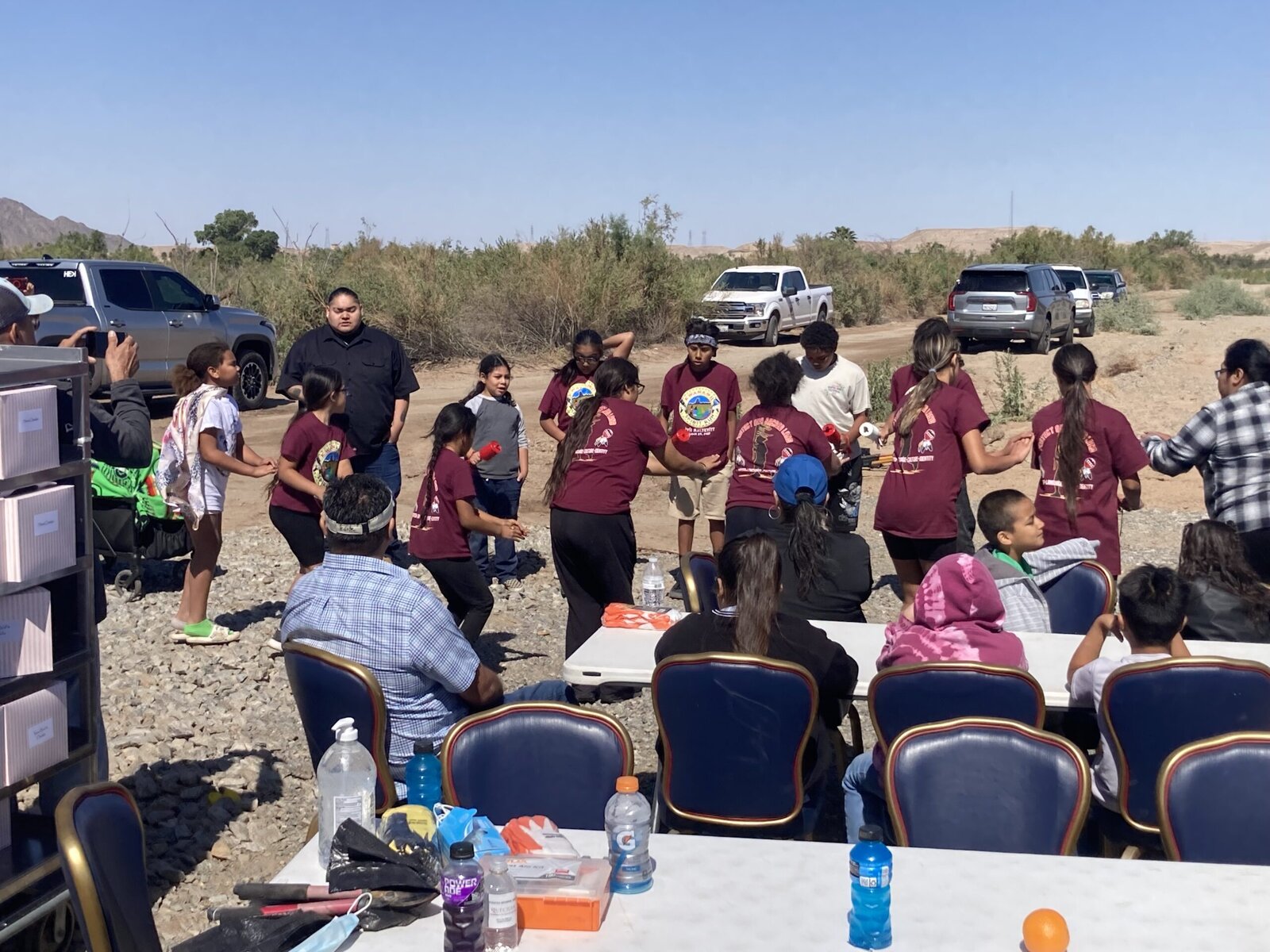
The lower Colorado River is a migratory bird flyway where 70 percent of avian species depend on riparian habitat — and 95 percent of the Southwest’s vital riparian habitat has been altered, degraded or destroyed in the last century. In addition to birds, Choate says the return of keystone species, like bobcats, indicates a healthy wildlife habitat. “I’ve seen several bobcats while I work, they just mosey on past me,” Choate says. “I do this for the critters. These are our ancestors.”
Choate is also focused on the tribe’s future: He is working with local San Pasqual High School students who are cultivating native plant seedlings for the project. On weekends, he leads field trips to teach the youth about native plants and wildlife at Anya Nitz Pak, Quechan for Sunrise Point Park. Anya Nitz Pak sits on 40 acres of tribal land set aside for restoration in 2006.
A goal of the restoration is to encourage the return of Quechan people to the river. On April 26, 2025, 80 tribal members across multiple generations planted 270 trees at the new restoration site. A tribal elder, Preston Arrow-weed, attended and spoke with the group. Children sang pipa songs to honor the land, people and trees. Planting is an opportunity for the Quechan Tribe to honor ‘Anyamátt ‘Antáyts (Mother Earth) for providing “food, water and shelter for our people for thousands of years.”
Each of the native species planted holds cultural significance and uses for the tribe. Willow branches are shaped into handles for gourd rattles, and dolls are crafted from cottonwood. Willow and mesquite are used to make cradleboards. “Growing native plants and having them available to gather revitalizes culture,” says Choate, who observes tribal members collecting plants near the river for traditional uses.
Across the river, more cottonwoods provide shade. The 400-acre East Yuma Wetlands were established in 2004 through a collaboration among the Quechan Tribe, Lower Colorado Multi-Species Conservation Program, Yuma Crossing National Heritage Area Heritage Area, and City of Yuma. Since the re-establishment of native plants, the former trash dump has ushered in the return of the endangered Ridgway’s rail and successful breeding of the endangered yellow-billed cuckoo.
The Quechan Tribe’s work is part of a broader movement of Indigenous-led riverside habitat restoration throughout the lower Colorado River. In 1995, Colorado River Indian Tribes (which includes Mojave, Chemehuevi, Diné and Hopi people) created the ‘Ahakhav Tribal Preserve, where they restored 1,000 acres of backwater habitat and reintroduced native plants. This spring, the Cocopah Tribe is restoring 400 acres of riverside floodplain with support from the Audubon Society, the Walton Family Foundation and federal funding. (This story series is also supported by the Walton Family Foundation.)
Despite the success the Quechan Tribe has had in reviving the river, challenges still loom. Even with the tribe’s water conservation savings and senior water rights, it cannot access the remaining 7,000 acre-feet of its Colorado River water allotment until 2035 — if that water still exists then. Scientists project that Colorado River flows will diminish upwards of 30 percent in the next 30 years. Later this year, seven states (California, Arizona, Nevada, Utah, New Mexico, Colorado, Wyoming), 30 tribes and Mexico will update the interim guidelines of the Colorado River Compact (which governs water allotments throughout the river basin) to reckon with the river’s overstretched demands and a drying climate.
The Quechan Tribe looks forward to having a seat at the table — a welcome change from the planning meetings back in 1922 that neglected tribes. In 2023, California Governor Gavin Newsom appointed Quechan President Jordan Joaquin to the Colorado River Board of California, the first Native American to serve on the board in its 87-year history. Jay Weiner, a tribal lawyer working with the Quechan Tribe, says the tribe is focused on ensuring the Colorado River is sustainably managed, “so each drop of water provides as much benefit as possible to the people, animals and ecosystems that all rely on the river.”
As water throughout the Southwest faces a tenuous future, the Quechan Tribe’s relationship with the Colorado River demonstrates possibilities for balancing human and economic water uses with a living river. “As long as we are taking care of the land, the land is taking care of us,” says Choate. He looks out at the growing seedlings and smiles. “This,” he says, “is land back.”
All scrolling images appear courtesy of the author.


